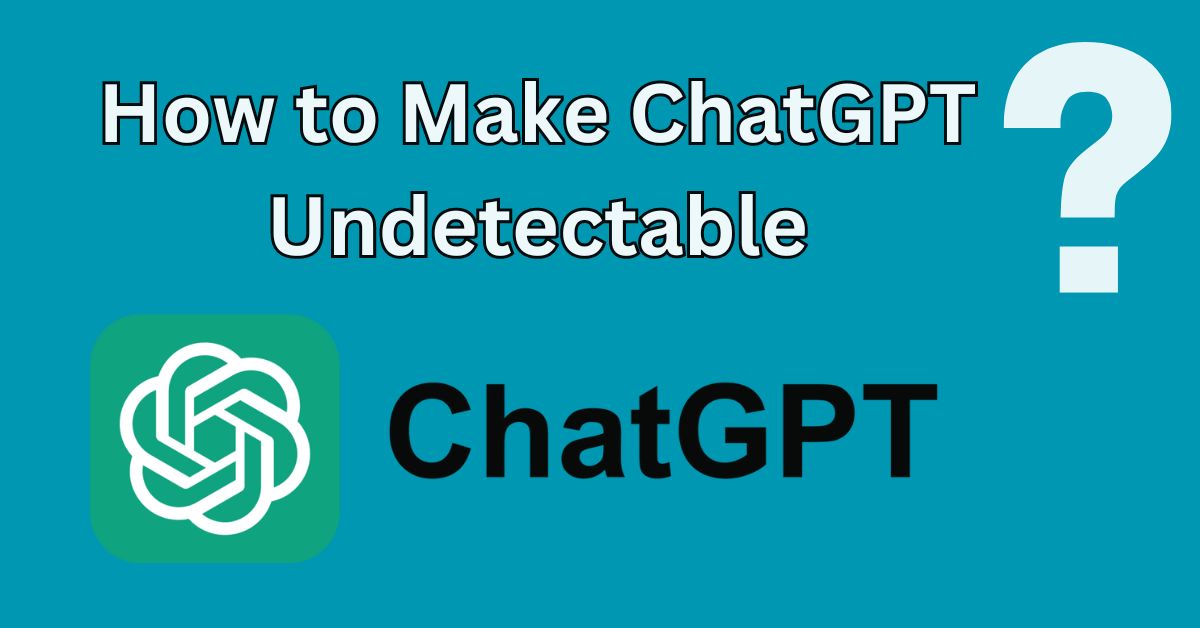Today our comprehensive guide is about how to make ChatGPT undetectable. Let’s start together. Chatbots like ChatGPT have become part of everyday life over time, often appearing very human-like in their interactions and undetectability. This article will explore various techniques used for undetectability as well as any ethical considerations surrounding AI technologies.
How to Make ChatGPT Undetectable

Human-Like Responses
- Technique: Implementing advanced training techniques to understand context and produce human-like text.
- Example: The training aimed to refine ChatGPT to sound more natural and less formulaic using idiomatic expressions, regional dialects, and various tones.
Context Awareness
- Technique: Making it more accessible for ChatGPT to track conversations over time and context.
- Example: Enabling ChatGPT to recall past interactions within a session, providing consistent and relevant responses.
Emotional Intelligence
- Technique: Recognizing and responding to user emotions through automated emotional detection algorithms
- Example: ChatGPT should provide sympathetic responses when users express frustration by saying things such as, “I understand this can be frustrating”, and, “Let’s work together on finding an ideal solution”.
Error Reduction
- Technique: By continuously training the model, reducing grammatical errors and improving factual accuracy.
- Example: Keeping ChatGPT up-to-date with the latest information and grammar rules will minimize mistakes.
Customization Capabilities
- Technique: Allows users to customize ChatGPT’s tone and style.
- Example: Depending on the demographic or personal preference, users could adjust formality, humour, and verbosity settings to make the chatbot’s output more human-like.
Ethical Implications
There are many ethical concerns associated with creating undetectable chatbots:
- Transparency: Whenever users interact with a machine, they should be able to tell which is a human. When it comes to sensitive areas such as healthcare and counselling, hiding the identity of a chatbot could cause trust issues.
- Privacy and Security: Artificial intelligence capabilities could be misused to gather personal information without consent or to conduct phishing attacks.
- Dependency: Human relationships and communication skills may be negatively affected by the overreliance on AI for social interactions.
Ensuring Responsible Use
There are several measures to mitigate potential risks, including:
- Clear Disclosure: Whenever a chatbot is being used, inform users. A subtle indicator during interaction or an initial disclaimer can achieve this.
- Ethical Guidelines: Companies and developers should follow strict ethical guidelines prioritizing user welfare.
- Limitations on Use: Use undetectable chatbots only for customer service and entertainment without compromising user trust or ethical standards.
- Regular Auditing: Audit AI systems regularly to ensure they comply with security protocols and ethical standards and do not develop or perpetuate bias.
Conclusion
Technical improvements and ethical considerations play a pivotal role in making ChatGPT undetectable. As AI technologies develop, trust must remain intact by following transparent deployment practices that adhere to moral norms. In addition to what AI can do now, we must think carefully about its future development.
FAQs
What does it mean to make ChatGPT undetectable?
Making ChatGPT undetectable refers to concealing that its outputs come from an AI model, using techniques that make the language and patterns used by ChatGPT more evocative of human-like interactions, decreasing human and software’s ability to detect its artificial origin.
Why might someone want to make ChatGPT’s responses undetectable?
There may be many motivations behind making ChatGPT’s responses undetectable; one reason might be anonymity or satisfying specific narrative requirements while avoiding ethical considerations (i.e., transparency vs honesty in communication).
Are there tools available to detect if ChatGPT or similar AI generates text?
Yes, several tools exist that enable individuals to detect AI-generated text. These range from proprietary software used by educational institutions for plagiarism prevention purposes and open-source tools capable of recognizing patterns typical of AI models to open-source tools designed specifically to detect these texts.
What are the risks of making ChatGPT undetectable?
Although making ChatGPT undetectable may be technically feasible, doing so involves risks, including ethical concerns related to deceitful digital communications practices as well as potential legal complications or undermining trust between digital communications channels and users. When applying AI technologies like these in this manner both purpose and consequences of using it properly must be carefully considered before moving forward with its use.
How can I ethically make ChatGPT’s responses more human-like without deceiving the audience?
To ethically increase the human-like qualities of ChatGPT responses, focus on refining its understanding of context and nuance. Use techniques such as fine-tuning on specific styles or subjects; always ensure your audience knows they’re engaging with AI – this approach maintains transparency while increasing interaction quality.

